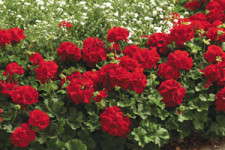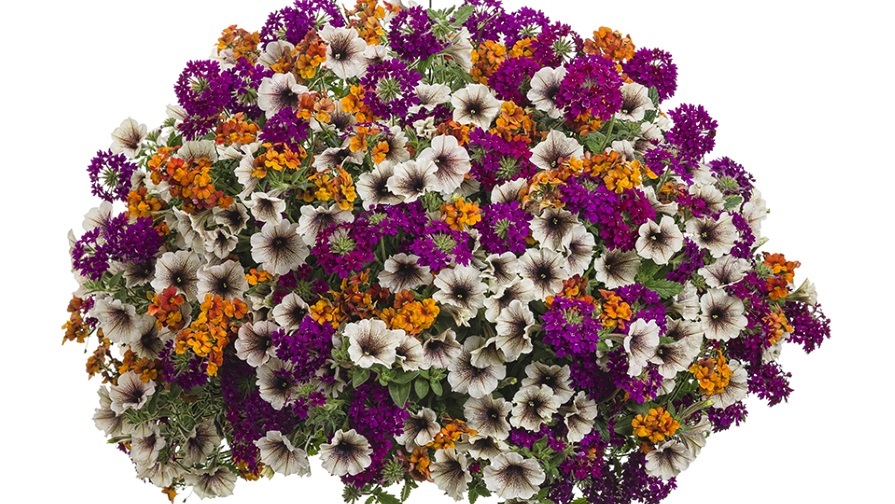Montgomery: The Five Game-Changing Products Of 2009

Even though the market wasn’t flooded with new products this year, marketing consultant Jerry Montgomery says there are five newbies that should combat shrinking margins. Montgomery lists them and goes into detail on each in his latest report below:
Introduction
There were not a lot of new products in 2009 that had or will have impact, but the five I’ll discuss below are clearly “home run” items that are game changers. My focus is products that are marketed nationally. There are regional and local products that may gain some prominence, but most local items fall into the category of marketing programs versus new products.
The five new products that will impact the industry most and have long lifecycles are:
– Calliope geraniums from Syngenta Flowers. The geranium category is invigorated with breakthrough breeding of a spectacular series.
–Suntory mandevillas. They’re revolutionizing the flowering tropical category. Although not totally new, you might say this was the breakout year.
–Aqualok sustainable hydration system developed by Freedom Garden Products. It’s a revolutionary irrigation method that will ensure more consumer success by eliminating frequent watering.
–Burpee Home Gardens. The launch of one of the most recognized vegetable brands was test marketed this year with an official launch in 2010.
–Confetti Gardens. They’re a method of producing multi-variety baskets and pots from a multi-cutting liner by Dömmen USA.
After seeing hundreds of thousands in baskets, patio pots and smaller pots, it is clear this geranium has caught the attention of the public. It has a unique velvety red color that stands out from all other reds. Here are the attributes Syngneta Flowers says differentiates this great new product.
– Exceptional heat tolerance
–Vigorous spreading habit
–Blooms under low light
–Drought tolerance
–Large semi-double flowers
–Unmatched dark velvet red color
At retail, Calliope geranium stood out particularly in baskets and patio pots. Consumers were scooping them up, but only when they were in bloom. As usual, the more flowers, the better the sell through.
This product will create more demand for geraniums than any other factor in the past 30 years. This is a must-have product. Learn more about it at Syngenta Flowers online.
The flowering tropical category is going to experience the greatest growth it has seen in many years because of these world-class genetics. As I traveled the country, the Sun Parasol was visible in 90 percent of the garden centers visited. For the most part, the plant size and color were ideal for quick turns.
The Sun Parasol is available in three types: Pretty (earliest) Original (three weeks later) and Giant (another three weeks later). Sun Parasol flowers do best under long days. They sell like wildfire when produced right, and they seem to have no problems carrying premium prices.
Most of the Suntory Mandevillas were produced in Florida and shipped to growers for redistribution because Mandevillas need heat and have longer crop times than bedding plants. Costa Farms was the dominant supplier of finished plants and Sun Fire Nursery was the main liner producer. Suntory is taking flowering tropicals to a new level of popularity with great genetics that adds a lot of consumer value. Learn more at Sun Parasol online.
Aqualok Sustainable Hydration System
Aqualok is a revolutionary hydration system that will do more to increase consumer satisfaction than any single factor in recent history. Imagine the potential for increased sales if consumers had greater success with green goods.
The Aqualok system was invented by Freedom Garden Products and then tested and refined through the efforts of Bell Nursery and Costa Farms. Aqualok must be used with a specially designed basket that holds the foam and has a reservoir. Some growers who tried the products had poor post-harvest results because the baskets need to ship with the reservoir filled.
So what is Aqualok really about?
– Aqualok is an eco-friendly foam that is made from recycled plastic soda bottles.
–Fully saturated Aqualok retains air pockets so plant roots can breathe.
–Allows plants to thrive without drainage.
The features of Aqualok are:
– Saves time and water.
–Water less often.
–Impossible to over water plants.
–Reduces the need for fertilizer by half.
–Increased shelf life at retail.
Aqualok will be a key factor in the future as a drive of consumer success. It is marketed exclusively by Costa Farms, Homestead, Fla. Learn more about the revolutionary product at Costa Farms online.
The vegetable category was clearly the fastest growing category for Spring 2009, as consumer demand spiked tremendously due to a number of factors. With only one other national brand to compete with, the Burpee program will be one of the most successful brand launches in history. Burpee is a well-known consumer brand that has a huge following. Couple that with a significant marketing effort, and we should expect Burpee to be a major participant in the vegetable category in 2010.
Burpee has developed large colorful labels, sustainable logo pots and attractive POS materials that will make for easy consumer recognition at retail. They will also support the brand with publicity, print, online and radio, tying it all together with a special Burpee Home Gardens website.
Burpee also offers a rebate program that allows participants to receive a royalty rebate for unsold plants.
Confetti Gardens
Developed by Dömmen USA, the program consists of multiple colors in a single liner that all bloom together. I looked at thousands of hanging baskets of the Confetti Gardens and did not see one basket where all three colors were not blooming together. The retail program had very attractive hanging basket labels that were designed to go over the basket hook and held in sight by the yolk of the basket.
Summary
The five products I discussed all make significant contributions in helping the industry increase sales, reduce discards, drive consumer appeal and satisfaction. They can increase value, and if positioned properly by each producer, they can be a conduit to combat shrinking margins.
About the author: Jerry Montgomery is a 40-year veteran of the floriculture industry and has worked for distributor companies, breeders and large growers specializing with a focus on sales and marketing. As an industry consultant, he works for large growers, distributors and breeder/producers. His focus is to understand the market dynamics from breeder to consumer through intense retail travel, visiting almost 1,500 stores since January 2008.










